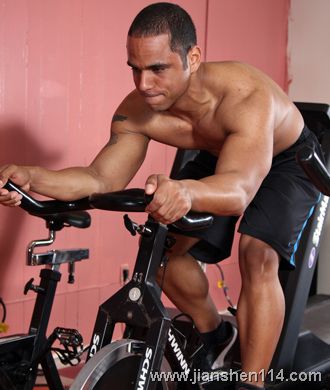How to train after leg injury
**Systemic Functional Training Program**
The X section is used as an auxiliary training component, typically scheduled after the main training session. The primary purpose of this supplementary training is to prevent injuries. For instance, if someone experiences knee pain during squat exercises, they should avoid the main workout and replace squats with a similar movement. This is where our X section comes into play.

**Quadriceps Training**
This exercise serves as an excellent alternative to seated leg extensions, especially for individuals with knee injuries. Traditional leg flexion and extension movements can cause discomfort or pain in the knees. This exercise effectively targets the quadriceps while minimizing pressure on the knee joint, promoting better knee stability.
**Key Points:**
- Similar to a plank position.
- Keep your knees at 90 degrees, about 2 cm above the ground.
- Maintain a straight back, hands on the floor, and avoid locking your elbows.
- Breathe evenly throughout the movement.
- If you have a knee injury, you can perform the exercise on one leg.
- Adjust the duration based on your fitness level and progress gradually.

**Leg Lift – 12 Reps × 4 Sets**
The leg lift is ideal for those with knee injuries. It uses a machine with a pedal that simulates the feeling of standing on the ground, significantly reducing knee strain compared to traditional squats. At the same time, it effectively works the leg and gluteal muscles.
**Key Points:**
- Sit on the machine and ensure your feet are not too low to avoid increasing knee pressure.
- Lift the pedals with your feet and loosen the leg lifter’s lock.
- Keep your core stable, control the movement rhythm, and slowly bend your knees until your thighs touch your chest.
- Your knees should be at a 90-degree angle when lowering.
- Push the pedal back to the starting position to complete one repetition.

**Balanced Air Cushion Exercise**
Unilateral limb instability exercises help improve ankle joint stability. By incorporating different angles, these exercises can also help prevent ankle injuries.
**Key Points:**
- Regardless of which leg you're working on, keep a slight knee bend.
- Tighten your core and maintain control throughout the movement.
- Initially, it may be challenging to balance, so start with basic stabilization exercises and gradually increase difficulty.

**Rope Muscle Practice – 15 Reps × 4 Sets**
This exercise is beneficial for protecting the lower back and knee ligaments. It helps build strength and stability in key areas of the body.
**Key Points:**
- Lie flat on the mat with your hands supporting your upper body and legs extended.
- Place your heels on a Swiss ball.
- Stretch your legs and pull the ball toward your body using your heels.
- Tighten your hips and legs simultaneously, then slowly lower your body back down to complete one rep.

**Resistance Side Step**
90% of people overlook this crucial exercise for knee stability. Whether you're into sports like surfing, skiing, football, or basketball, this movement can significantly enhance your balance and performance.
**Key Points:**
- Secure an elastic band around your calf or knee.
- Start with a slight knee bend, tighten your core, and keep your back straight.
- Move sideways like a crab, taking 10 steps in each direction.
- If your glutes feel sore, it means the workout is effective.
- Remove the band and jump side to side a few times to experience improved stability.
Spiral planner with Pu cover,Spiral planner with paper cover,Spiral planner for meeting
Lion Paper Products (Jiaxing) Co.,Ltd , https://www.lion-paper.com